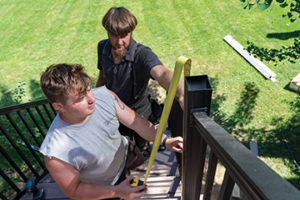Cracking the Culture Code: Share Vulnerability (Part 1)
May 27, 2025 Showing vulnerability is essential for fostering a collaborative and cohesive company culture. Daniel Coyle’s book “The Culture Code: The Secrets of Highly Successful Groups” discusses ways that leaders can earn trust and motivate their team members by demonstrating and encouraging vulnerability rather than running away from it.
Showing vulnerability is essential for fostering a collaborative and cohesive company culture. Daniel Coyle’s book “The Culture Code: The Secrets of Highly Successful Groups” discusses ways that leaders can earn trust and motivate their team members by demonstrating and encouraging vulnerability rather than running away from it.
Here are some takeaways from Coyle’s insights:
1. Lead by example.
Leaders who own up to their mistakes (even the best of us make them!) encourage others to be more transparent and accountable. Taking responsibility for our errors shows strength, not weakness. Don’t be afraid to say things like . . .
- “I messed that up.”
- “What could I have done better?”
- “What can I change to help you work more effectively?”
2. Deliver negative feedback face-to-face.
While this may feel awkward and stressful, it minimizes misunderstandings and facilitates connection. In-person feedback shows that you
value others and care about helping them improve and succeed.
3. Practice trampoline-style listening.
Coyle recommends that leaders “listen like a trampoline.” That involves interacting, asking questions, challenging assumptions, and making suggestions that can lead to other pathways. The trampoline effect comes into play when you absorb what others tell you, support them, and add energy to the discussion—and then use repetition to explore the same issues from different angles.
4. Encourage candor through consistent debriefs.
Regularly reviewing completed projects (after-action reviews) as a team establishes a routine for self-assessment and honest communication about what went well and what should have been done differently. It helps individuals become more comfortable talking about their successes and failures and fosters an atmosphere of support, not blame. Coyle stresses that successful reviews should include constructive candor, not brutal honesty that comes off as a personal attack. The goal of consistent after-action reviews is to forge a path forward as
a group while helping individuals achieve their potential.
Next in our series: Share Vulnerability (Part 2). Did you miss our Building Safety articles? Read them now: Building Safety: Part 1 and Building Safety: Part 2.